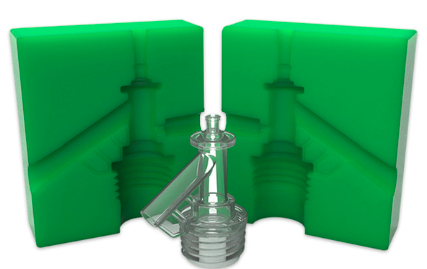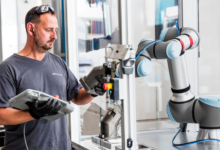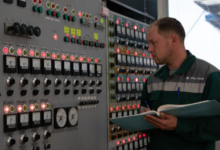Urethane Casting: A Comprehensive Guide

Introduction
Urethane casting, also known as polyurethane casting, is a versatile manufacturing technique used to create high-quality parts, prototypes, and products. This method is particularly favored for its flexibility, cost-effectiveness, and ability to produce complex geometries with precision. In this article, we will delve deeply into the urethane casting process, its applications, advantages, challenges, and emerging trends.
Understanding Urethane Casting
What is Urethane Casting?
Urethane casting involves creating parts from liquid polyurethane resin, which is poured into a mold and allowed to cure. This process is ideal for producing both functional and decorative components, particularly when high precision and specific material properties are required. The urethane casting process can be used to create a wide range of products, from prototype parts to low-volume production runs.
The Urethane Casting Process
- Design and Mold Preparation
- Design: The first step involves creating a detailed 3D model of the part using Computer-Aided Design (CAD) software. This design helps in determining the mold’s shape and features.
- Mold Fabrication: Molds are typically made from silicone for prototypes or low-volume production and from metal (aluminum or steel) for higher-volume runs. The mold needs to be carefully crafted to ensure it accurately reflects the design specifications.
- Resin Mixing
- Components: Urethane casting uses two main components: the urethane resin and a hardener or catalyst. The resin is mixed with the hardener in precise proportions to initiate the curing process.
- Mixing Process: The resin and hardener must be thoroughly mixed to ensure that the final part has consistent properties. Inaccurate mixing can lead to defects such as uneven curing or weak spots in the final product.
- Pouring
- Pouring Techniques: The mixed resin is poured into the prepared mold. Depending on the complexity of the part, various pouring techniques may be used, including manual or automated pouring systems.
- Degassing: To prevent air bubbles from forming within the resin, the mixed material may be subjected to a vacuum process to remove trapped air.
- Curing
- Curing Process: Once poured, the resin is allowed to cure. Curing can take place at room temperature or in a heated curing chamber, depending on the type of urethane resin used.
- Curing Time: The time required for curing can vary based on the resin formulation and the size of the part. Proper curing is essential for achieving the desired mechanical properties and dimensional accuracy.
- Demolding
- Removal: After curing, the part is removed from the mold. This step must be done carefully to avoid damaging the part. Automated demolding systems can be used to enhance efficiency and reduce manual labor.
- Finishing: Post-demolding, the part may require additional finishing processes such as trimming, sanding, or painting to meet final specifications.
Advantages of Urethane Casting
Versatility
Urethane casting is highly versatile, allowing for the production of a wide range of parts with varying geometries and material properties. It is suitable for creating complex shapes that might be challenging or expensive to produce using other methods.
Cost-Effectiveness
For low to medium production volumes, urethane casting offers a cost-effective solution. The cost of creating molds for urethane casting is lower compared to other methods like injection molding, making it an attractive option for prototyping and small-batch production.
Speed
The urethane casting process is relatively quick, especially for prototypes and small production runs. The short lead times for mold creation and resin curing enable rapid iteration and development of new products.
Material Properties
Urethane casting can produce parts with a range of material properties, including flexibility, hardness, and resistance to wear and tear. Various urethane formulations are available to meet specific performance requirements, such as high impact resistance or chemical resistance.
Precision
Urethane casting machines and techniques offer high precision and accuracy. The ability to create detailed and intricate parts makes it suitable for applications requiring tight tolerances and complex features.
Read also: Educational Benefits of a Kids Coffee Machine and Cashier Set
Challenges and Limitations
Limited Durability
While urethane casting provides good mechanical properties, the parts produced may not always match the durability of those made with more robust manufacturing techniques like metal casting or injection molding. Urethane parts may be susceptible to wear and degradation over time.
Resin Handling
The handling and mixing of urethane resins require careful attention to detail. Inaccurate mixing ratios or improper handling can lead to defects in the final part, such as weak spots or inconsistent properties.
Mold Lifespan
Silicone molds used in urethane casting have a limited lifespan and may degrade over time with repeated use. For high-volume production, metal molds may be necessary, which involves a higher initial cost.
Environmental Factors
The curing process for urethane casting can release volatile organic compounds (VOCs) into the environment. Proper ventilation and safety measures are necessary to mitigate the environmental and health impacts associated with urethane resins.
Conclusion
Urethane casting is a versatile and effective manufacturing method that offers numerous advantages, including flexibility, cost-effectiveness, and precision. By understanding the urethane casting process, its applications, and emerging trends, manufacturers can make informed decisions about the best approach for their production needs.
Despite its advantages, urethane casting also presents certain challenges and limitations, such as durability and environmental considerations. However, ongoing advancements in resin technology, digital integration, and sustainable practices are addressing these issues and expanding the possibilities of urethane casting.
As the industry continues to evolve, urethane casting will remain a valuable tool for producing high-quality parts and prototypes. By staying abreast of the latest developments and trends, manufacturers can leverage urethane casting to drive innovation and achieve excellence in their products.





